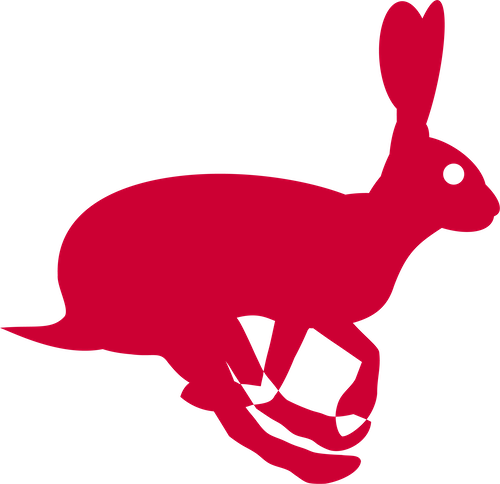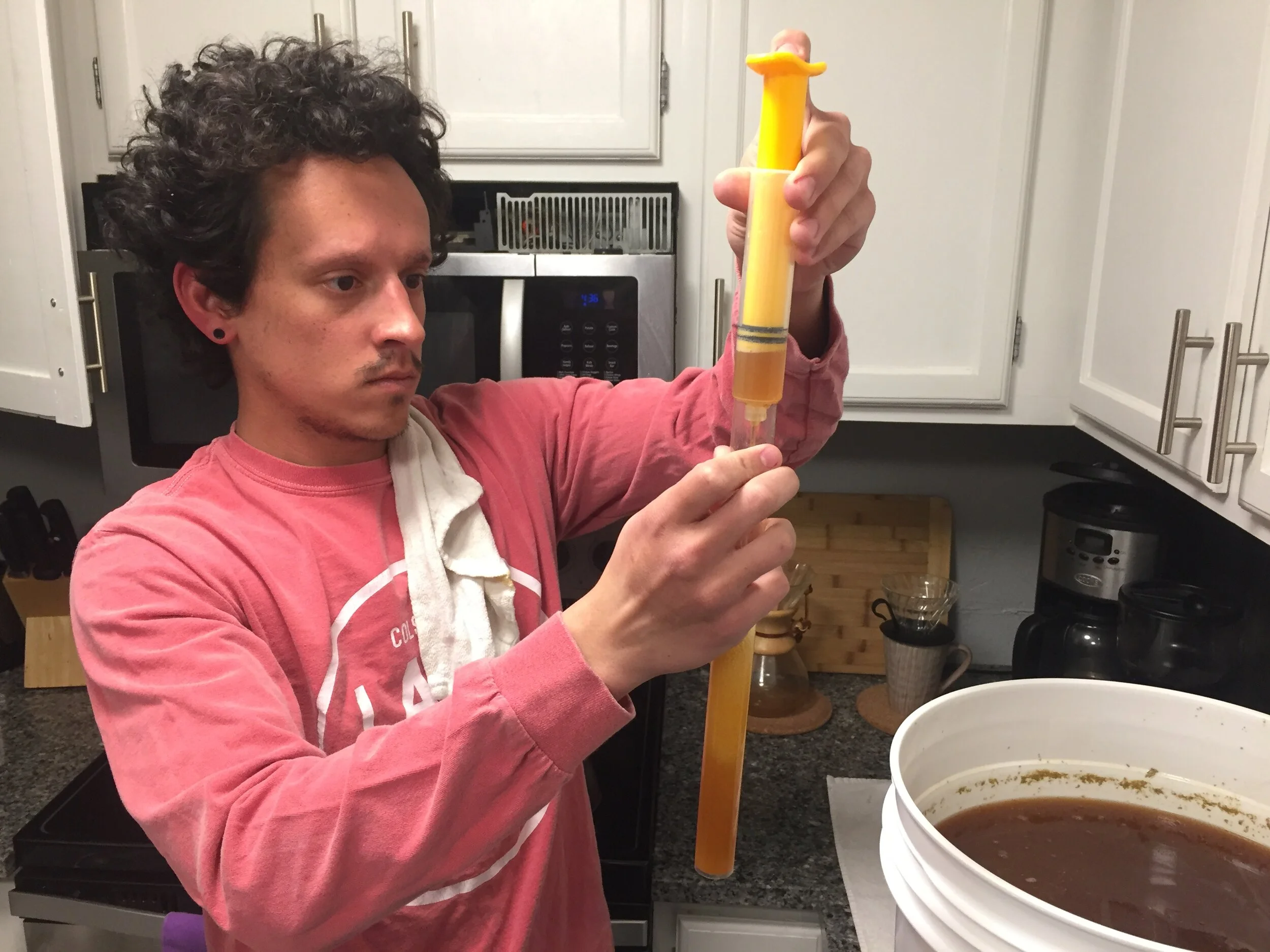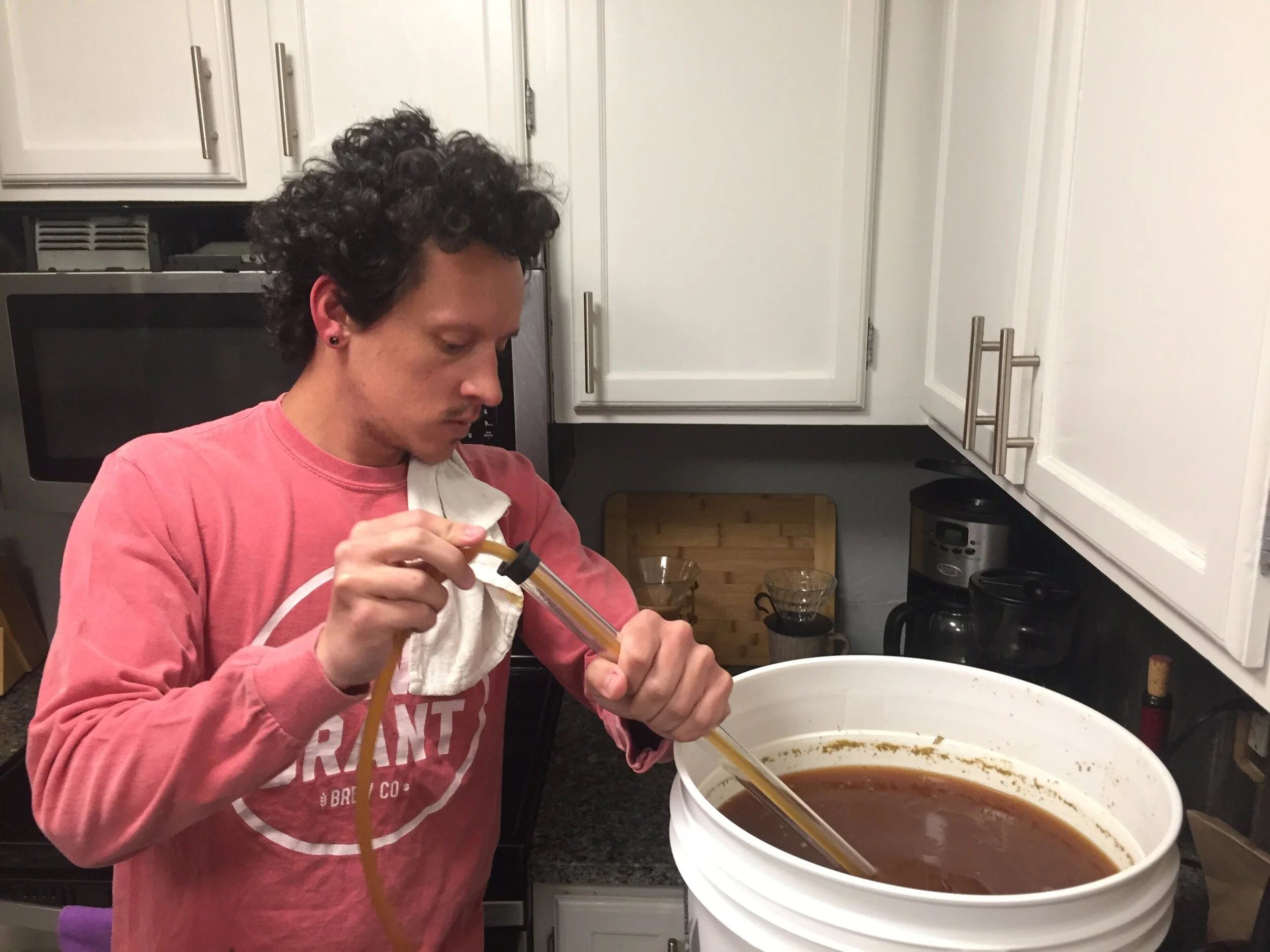Isolated Hare IPA | Part 02
Putting some beer into a plastic beaker to check the alcohol content.
Day nine | Secondary Fermenter
After a week in the primary fermenter the yeast started to slow down on eating the sugars. So, it is time to move the beer from the primary fermenter into the secondary fermenter, a five-gallon glass carboy. This is not a necessary part of the process, but the glass carboy will give your finished beer a crisper and cleaner taste.
Siphoning the beer into the carboy…
siphon…
siphon…
And back into the closet to keep fermenting.
Day Thirteen | Dry Hop Day
After another 4 days of fermenting, and eleven days after the initial brew day it is time to dry hop the beer. We add a few more ounces of hops to give the beer that iconic IPA aroma. This does not change the flavor profile very much, just the smell. We are going to dry hop with one ounce of each Columbus, Centennial, and Cascade hops.
Our three ounces of hops go into a muslin bag and get dropped into the beer.
Day Twenty-Three | Keg Day
Now that our beer is fully fermented and dry hopped it is time to move it to the keg. We will need to siphon it out of the carboy and into the keg so that it can become carbonated with CO2.
Siphon…
After we have it moved from the carboy into the keg we seal it up and attach our CO2 canister. I force carbonate my beer because I am inpatient. So, I turn the CO2 up to about 35psi for a few days to let it carbonate faster, and then turn it down to 12psi when it is time to serve.
Now that we are all hooked up, all we do is wait for it to carbonate. Hook up the beer hose and pour a pint.
See you in a couple of days!!








